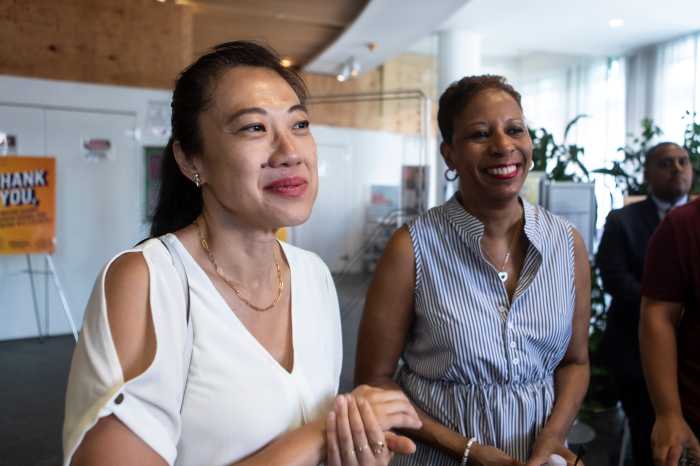Kenneth Kowald
It started on the Lower East Side in the early 1970s. Some people decided what New York needed was more greenery. They set to work. They dropped “seed bombs” into empty lots. They planted flowers into tree pits. They encouraged the use of window boxes. It was the start of the community gardens movement in the city. It was the start of what became the Green Guerillas.
(The more things change department: When residents of Bedford-Stuyvesant in Brooklyn spent a Saturday recently greening the area, they used “seed bombs” filled with wildflower seeds, which they hurled into vacant lots.)
Today, the GGs, as they are known, are characterized as a unique mix of education, outreach and organizing to help community garden groups grow food to feed people, engage youth in gardening, manage neighborhood green spaces, form coalitions throughout the city and work to preserve community gardens.
Queens has fewer community gardens, proportionate to the population, than Brooklyn and the Bronx, but the GGs have helped the Astoria Residents Reclaiming Our World on 35th Street between 35th and 36th avenues; Block Association #81 at Shore Avenue and Lakeville Road in Jamaica; Dunton Block and Civic Association at Remington Street and Shore Avenue in Jamaica; and McKinley’s Children’s Garden at Union Hall Street and 109th Avenue in Jamaica. All of them are worth a visit.
Its greatest commitment in the borough was helping to start the Greens for Queens Urban Farm on almost an acre of land of the First Presbyterian Church of Newtown on Queens Boulevard near Grand Avenue in Elmhurst. I first wrote about this wonderful program in June 2005.
The GGs worked with the church and South Asian Youth Action. The latter not only supports the Urban Farm, but, as TimesLedger Newspapers reported in March, it serves 600 youngsters in after-school programs at Richmond Hill and John Adams high schools, with academic help and tutoring and self-esteem projects. Like too many of our Queens nonprofits, it is facing hardships in these bad economic times.
The Greens for Queens Urban Farm helps soup kitchens and food pantries meet the increasing need for food in the borough, subjects I dealt with in columns earlier this year. It increases the supply of fresh food in the community. It promotes self-reliance through educational opportunities. It provides local residents with hands-on experience in food production. It connects urban youth to the earth in a meaningful way. It helps people learn to grow food in their own small areas, such as rooftops, balconies and containers.
That almost reads like a GG mission statement. The organization has come a long way since Liz Christy led those activists on the Lower East Side of Manhattan in hurling seed bombs, but it has never forgotten its commitment to making the city a better place for everyone.
To find out more about the Greens for Queens Urban Farm, visit greensforqueens.org. Steve Frillmann, executive director of the Green Guerillas, may be reached at steve@nycgreen.org. After you find out more about both groups, you may be inspired to join in the work of community gardening and endorse the GG’s slogan, “It’s your city. Dig it!” After all, there are still some empty lots in Queens and those seed bombs can be effective.
(Full disclosure: Years ago, I helped get the large corporation I worked for to make the first business contribution to the GGs. The company has been a consistent supporter of the GGs since then. In retirement, I was treasurer of the GGs for a short time. I continue to be a member and contribute to its work. It is a pleasure.)


































